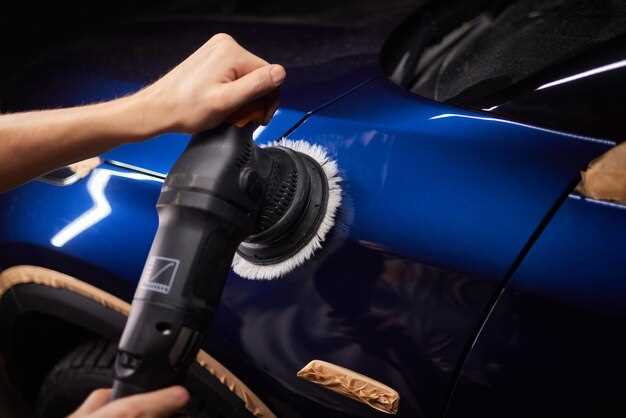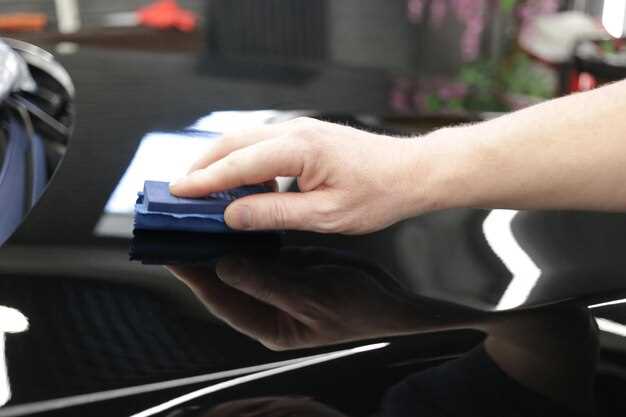
Maintaining the appearance of your car is essential for both aesthetic and resale value. One of the most effective ways to enhance your vehicle’s shine and protect its paint is through proper polishing and waxing. These two processes not only improve the look of your car but also provide a barrier against environmental contaminants.
Polishing your car involves removing minor scratches and imperfections from the paint surface, while waxing adds a protective layer that helps to seal in that shine. Understanding the correct techniques for these tasks is crucial to achieve the best results. This guide will walk you through the necessary steps to ensure your car looks its absolute best, using the right materials and methods to effectively apply wax and polish.
By following these steps, you can restore your car’s finish and keep it looking as good as new for years to come. Whether you are a seasoned enthusiast or a first-time car owner, mastering the art of polishing and waxing is an important skill that will serve you well. Let’s dive into the details of how to properly polish and wax your car to achieve that showroom shine.
Choosing the Right Polish for Your Car’s Finish

Selecting the correct polish for your car’s finish is essential for achieving a flawless shine and maintaining the paint’s integrity. The type of polish you choose can significantly impact how well the surface is prepared for waxing and how effectively it will protect the paint over time.
First, consider the condition of your car’s finish. If your vehicle has light swirl marks or minor imperfections, a finishing polish with gentle abrasives will suffice. Look for products labeled as ‘swirl removers’ or ‘finishing polishes,’ which are designed to enhance shine without removing excessive layers of clear coat.
For deeper scratches or oxidation, a medium-cut polish may be necessary. These products contain more abrasive agents and are effective at leveling the paint surface. However, they should be used cautiously; always test on a small area first to ensure you don’t damage the clear coat.
Ensure that the polish you select is compatible with your car’s paint type. For example, some polishes are specifically formulated for clear coats, while others work well on single-stage paints. Reading the label or consulting a professional can help in making the right choice.
Lastly, consider the application method. Some polishes are best used with a dual-action polisher, while others can be applied by hand. Using the appropriate tool can enhance the effectiveness of the polish, leading to a better final look and a more efficient waxing process. Always follow the manufacturer’s instructions for optimal results.
Step-by-Step Guide to Applying Wax for Maximum Shine

Applying wax to your car is essential for achieving a glossy finish and protecting the paint. Follow these steps for maximum shine:
- Gather Your Supplies:
- Quality car wax
- Wax applicator pad
- Microfiber towels
- Car wash soap
- Bucket
- Water source
- Wash Your Car:
Start with a clean surface. Use car wash soap and water to wash your car thoroughly, making sure to remove dirt and grime. Rinse well and dry it using microfiber towels.
- Choose the Right Wax:
Select a wax product that suits your needs, such as paste, liquid, or spray wax. Each type has its application method and benefits.
- Apply the Wax:
- Use the wax applicator pad to pick up a small amount of wax.
- Work in small sections, applying the wax in a circular motion.
- Ensure even coverage without excessive product.
- Let the Wax Haze:
Allow the wax to haze over as per the manufacturer’s instructions, usually around 5-10 minutes. This step is crucial for the wax to bond with the car’s paint.
- Buff the Wax Off:
- Using a clean microfiber towel, gently buff the hazed area in a circular motion.
- Ensure all residue is removed for a smooth finish and enhanced shine.
- Inspect Your Work:
Carefully check each section of your car to ensure an even shine and to identify any missed spots. Reapply wax if necessary.
- Final Touches:
Once complete, stand back and admire your work. Maintain the shine by regularly washing your car and reapplying wax as needed.
By following these steps, you’ll achieve a stunning shine that not only enhances the appearance of your car but also protects the paint from environmental damage.
Common Mistakes to Avoid When Polishing and Waxing
One of the most common mistakes people make when polishing their car is skipping the wash step. It is crucial to thoroughly clean the vehicle before applying polish to remove dirt, grime, and debris that can lead to scratches during the polishing process.
Another frequent error is using the wrong type of polish. Different paints and finishes require specific products, so it’s essential to choose a polish suitable for your car’s surface. Using an abrasive polish on a delicate finish can cause significant damage.
Many car owners also neglect to work in small sections. Polishing large areas at once can lead to uneven results and make it difficult to achieve a consistent shine. Tackling smaller sections allows for better control and thorough application.
Over-applying polish is yet another mistake. Using too much product can create a thick buildup that is hard to buff out, resulting in a dull finish. It is advisable to use a moderate amount of polish and apply it in thin layers for a smoother result.
Failing to use the right tools can significantly impact the polishing process. Using inappropriate applicators or cloths might lead to scratches or uneven application. Always opt for high-quality, suitable tools designed specifically for automotive care.
Additionally, forgetting to check for temperature and direct sunlight is a common oversight. Polishing and waxing should be done in a shaded area or when the car is cool to avoid product drying too quickly, which can make buffing more difficult.
Lastly, one of the most critical mistakes is not applying a protective wax after polishing. Wax not only enhances the shine but also provides a protective layer to the car’s surface. Skipping this step can leave your car vulnerable to environmental damage.



